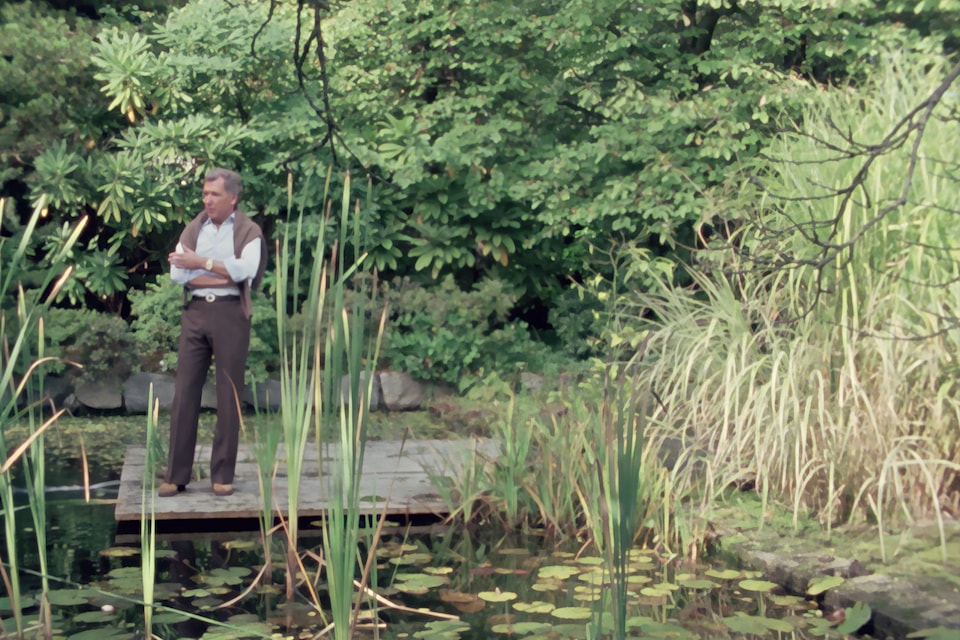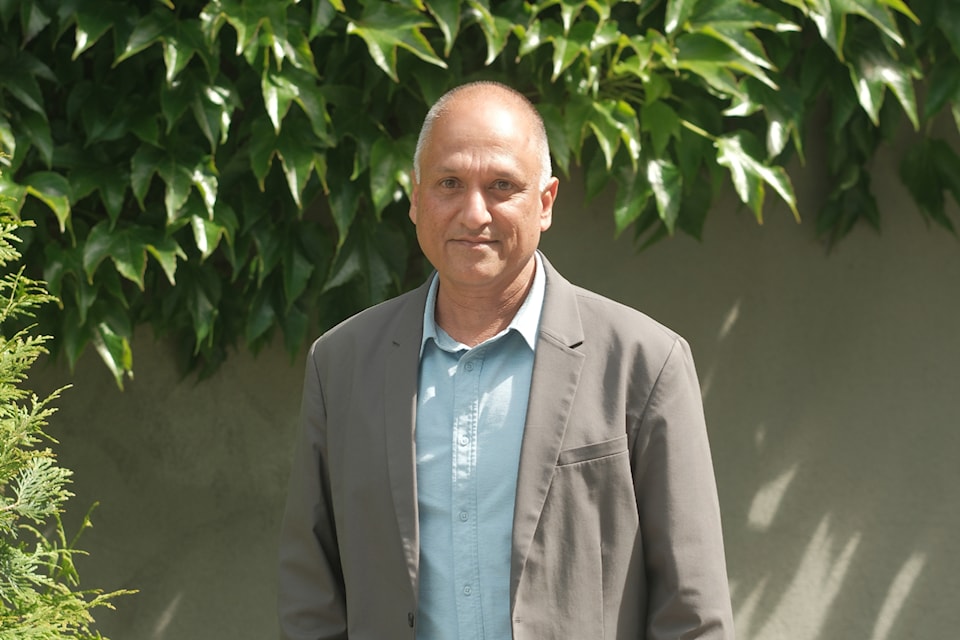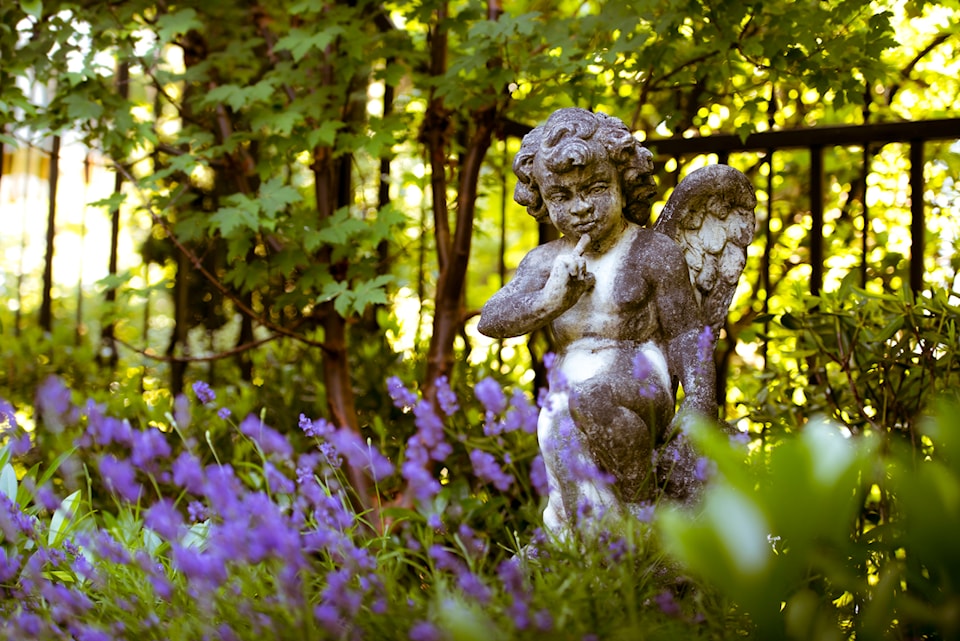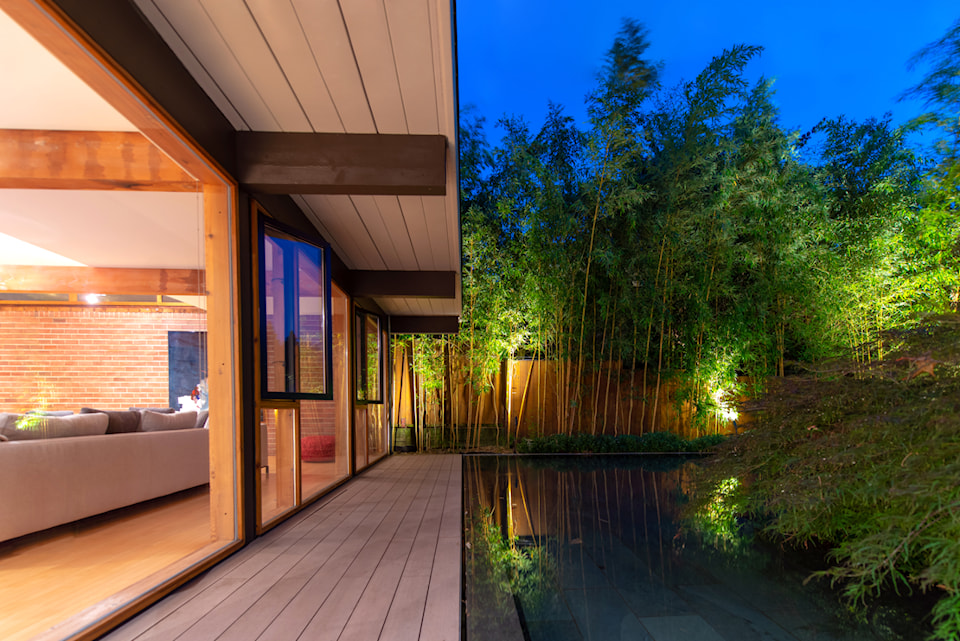Behind a simple cedar fence in Vancouver’s Point Grey neighbourhood is “a secret garden, an oasis and a sanctuary for the creative spirit,” confides the late Canadian architect Arthur Erickson in a 1981 National Film Board of Canada (NFB) documentary.
He made his home here for over 50 years, planting colourful rhododendrons and vivid azaleas amid canopies of tall grasses and dense blue bamboo. Douglas fir and apple trees dotted the 8,000-square-foot landscape. The large reflecting pool, a common water element found in many of his architectural designs, became a focal area in his garden and it’s where Erickson contemplated many of his most famous projects. In celebration of the 100-year anniversary of the renowned architect’s birth, the NFB has restored and re-released the short doc called Arthur Erickson.

Most of us can only dream of such a Shangri-La, but whether you live on a sprawling property or only have access to a small balcony, you can incorporate imaginative elements to create your own backyard sanctuary.
“When we moved to Manila in the Philippines from Uganda when I was a little boy, I remember a very urban area, with my grandfather growing everything in pots – and I saw the care he was putting into watering and looking after his plants,” reminisces Vancouver landscape architect Paul Sangha, of Paul Sangha Creative. “And my maternal grandparents, living in India, had a lovely garden, so I was influenced from both sides about living in nature within an urban environment.”
Whether he’s working on a large or small project, Paul likes to “get into the mental space” of his clients. “I think about what I have to deal with to create privacy. Is there a lot of wind? How much shade does the property get? Is there too much sun exposure – does the client even like sun? Sometimes they’ve never even had a garden before so it’s also an exploration for them too.”
An explosion of ideas and imaginative workarounds developed during and after the COVID-19 pandemic and creating a calming garden sanctuary was a direct repercussion.
“There was a monumental resurgence in the importance of gardens in people’s lives then,” Paul says. “You could finally occupy a space, even on a small patio or balcony, and not feel threatened. A big thing was people wanting to grow their own food, whether in pots or gardens. I really feel that we grew up several generations at that time, with people developing a respect for nature and in terms of their awareness of the environment as a legacy for their children.”

When Paul designs a garden, he emphasizes the importance of fluidity of movement: “Too many right angles bother people,” he explains.
People’s emotional response to colours, textures, water and fragrance sets the stage for a garden sanctuary, rejuvenating, restful, nostalgic or romantic. Think of the key role gardens played in Jane Austen novels or the current TV series Bridgerton or Frances Hodgson Burnett’s The Secret Garden.
“Art and sculpture also play a big role in any garden and their positioning is of vital importance,” Paul says. “Sometimes a small piece in a quiet corner can make a bigger statement than a large sculpture.” Some of Paul’s clients are already art collectors and his company will even design pieces internally.
“We work with local artists and fabricators to commission pieces from award-winning artists like sculptor Marie Khouri, and we get amazing Indigenous work through Douglas Reynolds Gallery.”

Lighting is another important element in creating a garden sanctuary, Paul says: “I see it as a whole canvas, where an exciting new world opens up at night.”
He adds, “I like to use a lot of water in my landscape designs, whether large pools or koi ponds. Water transcends every culture. But no rushing water as that creates anxiety,” Paul laughs.
Whether having your morning coffee on the balcony or entertaining friends for dinner in the garden, dining outside is one of the great pleasures of having your own backyard sanctuary. Paul suggests investing in good furniture pieces appropriate to our climate; pieces that allow for the air to pass through to prevent mildew like the German company DEDON’s beautiful woven butterfly-inspired collection, PAPYON.
As new fashion and paint colours trend every year, so too do garden styles. Trending in 2024 is the dramatic “goth garden” that evokes the Victorian era’s obsession with moody, overgrown greenery and crumbling statuary. That doesn’t mean you should rush out to plant poisonous belladonna! You can create your own interpretation, focusing on a profusion of deep purples like “living on the edge” irises, black-burgundy nasturtiums and chocolate-scented black dahlias interspersed with beguiling, partially hidden stone angels and mythical creatures.
Keep in mind that sustainable, eco-friendly plants that attract pollinators like bees and butterflies can never go out of style.
On a more intimate scale, mobiles, seashell collections and driftwood from your beach travels, lattices, screens and trellises for vertical gardening, and living walls do double duty in small spaces. Cascading plants and flowers also add privacy and add to the mood. Water features, such as a small trickling bird bath or hummingbird feeder, all induce contemplation and repose.
Large or small, when surrounded by such a calming sanctuary, you can roll out your yoga mat or meditate anywhere.
The documentary Arthur Erickson is available for free streaming on NFB.ca, and his garden oasis is open to the public via guided tours, April to October. Book here: aefoundation.ca/tours
This feature appeared in the summer edition of Boulevard Vancouver.
